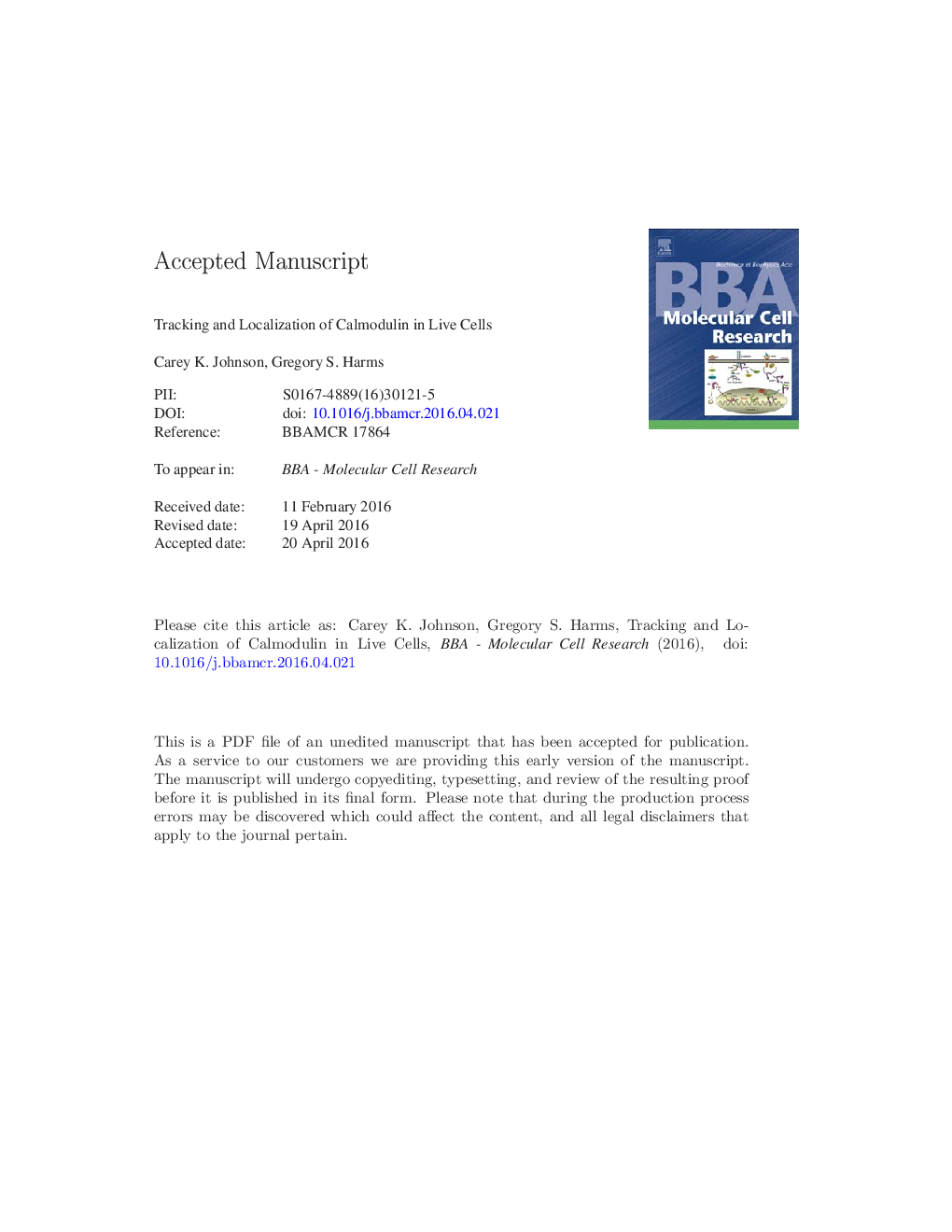| Article ID | Journal | Published Year | Pages | File Type |
|---|---|---|---|---|
| 10801728 | Biochimica et Biophysica Acta (BBA) - Molecular Cell Research | 2017 | 27 Pages |
Abstract
The calcium signaling protein calmodulin (CaM) interacts with many target proteins inside the cell to regulate a wide range of biological signals. CaM's availability to propagate signals depends on its mobility, which may be regulated by interactions with multiple target proteins. We detected single molecules of CaM labeled with a fluorescent dye and injected into living HEK 293 cells, and we used high-speed, wide-field, single-molecule imaging to track single CaM molecules. Single-molecule trajectories were analyzed to characterize the motions of individual CaM molecules. Single-molecule localization resolved CaM positions with a position accuracy of < 100 nm, permitting sub-diffraction imaging of features with localized CaM that form in response to increased free Ca2+. Single-molecule tracking demonstrated the presence of a wide range of mobilities of individual calmodulin molecules in a cell, with diffusion coefficients ranging from < 0.01 μm2 sâ1 to ~ 5 μm2 sâ1, whereas analysis by spatio-temporal image correlation spectroscopy revealed faster-moving components with diffusion coefficients of > 10 μm2 sâ1. For molecules confined to small regions of the cell, super-resolved images of presumed signaling complexes were recovered. Individual trajectories were classified as normal diffusion, confined diffusion, or directed motion, and could suggest how the individual CaM molecules were bound in the cell. The results show that interactions of CaM with target proteins result in decreased translational mobilities of a significant fraction of CaM molecules inside cells. The work presented here illustrates methods that can characterize location, mobilities, and the availability of signaling molecules in live cells.
Keywords
Calmodulin binding proteinPBSDMEMCCDHEPESSingle-molecule trackingCBDSTICSHEKFCSFRAPSMTMSD1,2-Bis(o-aminophenoxy)ethane-N,N,N′,N′-tetraacetic acid4-(2-hydroxyethyl)-1-piperazineethanesulfonic acidDulbecco's modified Eagle's mediumpsfAlexa Fluor 647BAPTAPoint spread functionMolecular mobilityCharge-Coupled DeviceSuper resolutionPaintCAMSignalingfluorescence correlation spectroscopyfluorescence recovery after photobleachingPhosphate-buffered salineSingle moleculemean squared displacementDiffusionCalmodulinhuman embryonic kidney
Related Topics
Life Sciences
Biochemistry, Genetics and Molecular Biology
Biochemistry
Authors
Carey K. Johnson, Gregory S. Harms,
